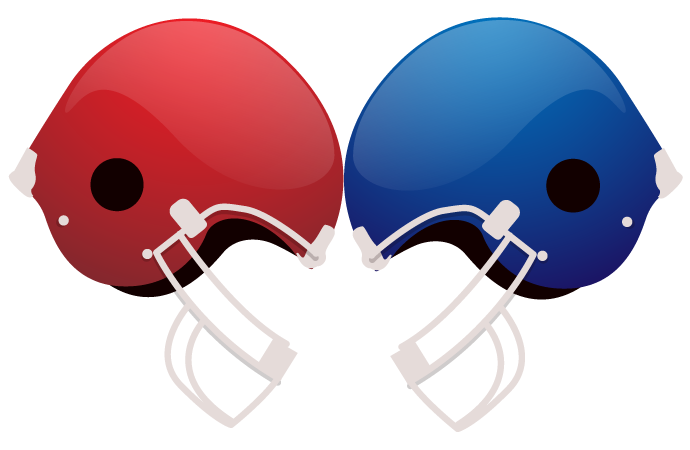Everything you need to know about the NFL's 2020 franchise tag
The NFL’s 2020 franchise-tag window opens Thursday … with a twist.
While the NFL Players Association mulls approval of a new collective bargaining agreement, a series of unique rules in the existing CBA will govern at least the start of the tag process. Let’s get into the details.
First, remind me: How does the franchise tag work?
The franchise tag is a labor designation that restricts a player’s potential movement in exchange for a high one-year salary. It is governed through the CBA, represents a fully guaranteed salary once signed and has two types.
What are the two types?
The first is the “exclusive-rights” tag. Any player with this tag is bound to the team for the upcoming season, and his agent is prohibited from seeking offer sheets elsewhere. The second is the “non-exclusive” tag. In this scenario, players can sign an offer sheet with another team. The original team has the right to match the offer. If it doesn’t, it will receive two first-round draft picks from the new team.
2 Related
What about the transition tag?
The transition tag is less expensive but isn’t used as much because it does not extract compensation from the new team. It was used most recently in 2018 by the
Looking ahead to the offseason:
• Ranking the top 50 free agents »
• Biggest looming free-agent decisions »
• Top offseason needs for all 32 teams »
• Free agency coverage » More NFL »
How are the tag numbers determined?
Tag values are position-specific. Here’s the basic math:
-
The exclusive-rights tag is calculated by taking the average of the top five players’ cap percentage at the position for the current season, or 120% of the player’s previous year salary — whichever is greater. It has the highest value among the tags, and its specific value isn’t determined until late April to account for current-year deals.
-
The non-exclusive franchise tag is determined by calculating the average of the top five players’ cap percentage at the player’s position during the past five years, or 120% of the player’s previous year salary — whichever is greater.
-
The transition tag value is calculated by taking the average of the top 10 players at a position during the past five years.
What happens after a tag is applied?
It depends on the interest level between the sides. The player can sign the tender at any time, a decision that fully guarantees the salary and immediately places all of it on the current year’s cap charge. This can increase a player’s leverage in a tight cap situation; the team will be motivated to negotiate a longer-term deal to lower the cap number. But that decision also can backfire if the team is comfortable with the high cap number. The leverage in this case would side with a player who remains unsigned as camp looms. A tagged player can’t participate in offseason workouts or any camps until he has at least signed the tender.
In either event, the sides have until July 15 to agree on a multiyear extension. After that point, the player can sign only a one-year contract, which cannot be extended until after the season.
Can a team rescind a tag?
Yes. This has been documented seven times, most recently by the Carolina Panthers with cornerback Josh Norman in 2016. A rescinded tag is among the risks a player takes when he doesn’t immediately sign the tender. It can’t be rescinded once it is signed. After a tag is rescinded, the player becomes an unrestricted free agent.
How many players will be tagged in 2020?
Decisions each year are based on unique current details, but there has been an average of six franchise tags per year over the past seven offseasons.
Which players could be tagged this year?
If productive long-term negotiations don’t materialize, the possibilities make up a pretty long list. ESPN NFL Nation reporters recently produced 21 possibilities. They include:
-
Shaquil Barrett, Tampa Bay Buccaneers linebacker
-
Amari Cooper, Dallas Cowboys receiver
-
Bud Dupree, Pittsburgh Steelers linebacker
-
Dante Fowler Jr., Los Angeles Rams linebacker
-
A.J. Green, Cincinnati Bengals wide receiver
-
Hunter Henry, Los Angeles Chargers tight end
-
Chris Jones, Kansas City Chiefs defensive tackle
-
Matthew Judon, Baltimore Ravens linebacker
-
Yannick Ngakoue, Jacksonville Jaguars defensive end
-
Dak Prescott, Dallas Cowboys quarterback
-
Brandon Scherff, Washington Redskins guard
-
Justin Simmons, Denver Broncos safety
-
Ryan Tannehill, Tennessee Titans quarterback
-
Jameis Winston, Tampa Bay Buccaneers quarterback
• Most recent mock: Kiper » | McShay »
• Kiper’s Big Board » | McShay’s Top 32 »
• First Draft podcast » | Draft order »
• Full class rankings from Scouts Inc. »
More NFL draft coverage »
Does the tag usually lead to a multiyear deal?
Not necessarily. During the past seven seasons, it has happened 50% of the time. Of the past 44 franchise tags extended, according to ESPN Stats & Information, 22 resulted in multiyear deals during their tag season.
Tag results in 2019 came with a twist: Three of the seven tagged players were traded, including two who received contract extensions that their new teams signed off on.
The Kansas City Chiefs sent defensive end Dee Ford to the San Francisco 49ers, where he received a five-year deal worth a maximum of $87.5 million, in exchange for a 2020 second-round pick. Then the Chiefs acquired defensive end Frank Clark from the Seattle Seahawks for a 2019 first-round pick and a second-round pick in 2020. Clark signed a new contract with the Chiefs worth a maximum of $105.5 million over five years.
Meanwhile, the Houston Texans ended pass-rusher Jadeveon Clowney’s holdout by trading him to the Seahawks.
Why would a team tag and then trade a player, rather than tag him and wait to get two first-round picks?
Because NFL teams almost never acquire players via franchise-tag offer sheets. In fact, it has happened only once. In 1998, the Panthers gave up two first-round picks to sign Redskins nose tackle Sean Gilbert to a seven-year, $46.5 million contract. It’s better to get something (via a tag and trade) than nothing (via an unsigned franchise player who holds out). In this case, the tag becomes a tool for trade leverage.
How much will it cost to tag players in 2020?
The NFL hasn’t calculated the values yet, and one of the twists of the franchise-tag window is that teams can use the tag on players without knowing the exact figure. The numbers will be released in the coming weeks. In a few cases, deals that happen between now and then can affect the exact numbers. The exact per-team salary cap total — also not yet solidified — can change them as well.
For perspective, however, here are the 2019 numbers for the non-exclusive tag:
-
Quarterback: $24.865 million
-
Running back: $11.214 million
-
Receiver: $16.787 million
-
Tight end: $10.387 million
-
Offensive line: $14.067 million
-
Defensive end: $17.128 million
-
Defensive tackle: $15.209 million
-
Linebacker: $15.443 million
-
Cornerback: $16.022 million
-
Safety: $11.15 million
-
Kicker/punter: $4.971 million
Relive the NFL’s greatest games, original series and more. Watch on ESPN+
Is it always bad for the player to play under the franchise tag?
The franchise tag pays a player close to market value for one year but provides no future guarantees. The tag becomes an advantage if a player remains healthy and valuable enough that the team feels compelled to use it multiple times. The value of the second tag is 120% of the first, and the third 144% of the second.
OK, but how rarely do teams use the tag on the same player in consecutive years?
It happens more often than you might think: 16 times since 1997, including five times since 2011. Kicker Phil Dawson (Cleveland Browns), linebacker Anthony Spencer (Cowboys), quarterback Kirk Cousins (Redskins), cornerback Trumaine Johnson (Rams) and running back Le’Veon Bell (Steelers) were all tagged in consecutive years since 2011.
It is much less common for offensive skill players. In 2017, Cousins became the first quarterback ever franchised in consecutive years. There have been only four other skill players tagged twice at any point in their careers: quarterbacks Drew Brees (2005, 2012) and Peyton Manning (2004, 2011), receiver Rob Moore (1995, 1999) and Bell (2017, 2018).
Are some positions more susceptible to the franchise tag than others?
Yes. Per ESPN Stats & Information, 30 offensive linemen, 29 defensive ends and 26 linebackers have been franchise tagged since 1993. On the other end, there have been four punters, 10 quarterbacks, 11 tight ends and 12 running backs franchised.
To celebrate 100 years of pro football, Peyton Manning travels the country to see the people and places that made the NFL the NFL.
Watch on ESPN+ » More »
Some of those positional descriptions seem vague …
You’re right, and sometimes that causes conflict between players and teams. Offensive line positions, for example, are valued quite differently from a financial perspective. Teams will pay much more for a left tackle than, say, a right guard. But it costs the same to franchise them. For pass-rushers, disputes often arise over whether a player is designated as a defensive end or an outside linebacker.
The CBA says only that it should be based on “the position at which the franchise player participated in the most plays during the prior league year.” Today’s hybrid schemes can sometimes make that answer a debatable point.
Do some teams use the tag more than others?
Yes, but given the 27-year span of the tag’s existence, the numbers are more a function of talent and cap management than a philosophical opposition or support of the tag itself. Every team in the league has used it at least twice. The Chiefs, Seahawks and Indianapolis Colts have used it an NFL-high 11 times. The Texans (two), Falcons (three) and Browns (three) have used it the fewest times.




